If you follow filtration the way I do—from HVAC to oil-gas separation—you’ve probably noticed a quiet shift: engineers are asking for higher efficiency without surrendering airflow or budget. That’s exactly where composite fiberglass filter paper keeps popping up in my notes and plant visits.
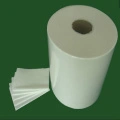
What it is and why it’s trending
Built from borosilicate micro-glass fibers and reinforced with PET nonwoven, this media balances capture efficiency and pleatability. Many customers say it “just runs calmer” on the line—less fuzz, fewer breaks. To be honest, that’s not trivial at 24/7 converting speeds. Industry chatter suggests two drivers: stricter ePM1 performance under ISO 16890, and the growth of oil-mist and liquid-aerosol control in factories.
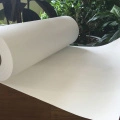
Typical process flow (shop-floor version)
- Materials: borosilicate micro-glass, PET nonwoven scrim, acrylic/epoxy binder (8–18%).
- Method: wet-lay fiber dispersion → web formation → PET lamination → binder impregnation → calendering → thermal curing.
- Conversion: edge trimming, roll slitting (up to 1200 mm), pleating trials.
- Testing: basis weight (ISO 536), thickness (ISO 534), permeability (Frazier), efficiency per ISO 16890/EN 1822/ASHRAE 52.2; oil-mist per ISO 12500-1.
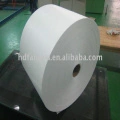
Product specification snapshot
Product Name: Composite Fiberglass Filter Paper | Origin: Second Buliding and Studying No21 shiji street, Handan, Hebei China | Filter Grade: um1–um30
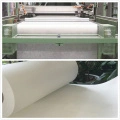
| Parameter | Typical Range | Notes |
|---|---|---|
| Fiber blend | Micro-glass + PET reinforcement | Composite, low lint |
| Pore/grade | ≈ um1–um30 | Real-world use may vary |
| Basis weight | 100–220 g/m² | ISO 536 |
| Thickness | 0.5–1.2 mm | ISO 534 |
| Efficiency @0.3 μm | H10–H13 optional | EN 1822/ISO 29463 |
| ePM1 (ISO 16890) | 60–90% | Depending on basis weight |
| ΔP @5.3 cm/s | 70–160 Pa | Fresh media |
| Temp resistance | 120°C cont., 150°C peak | Dry air |
| Service life | 6–18 months | Load dependent |
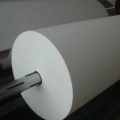
Where it’s used (quick tour)
-
– Cleanrooms/paint booths (H10–H13 stages)
– HVAC ePM1 upgrades for offices and hospitals
– Oil-gas separation in compressors and vacuum pumps (ISO 12500-1)
– Liquid pre-filtration for chemicals and food/beverage
Advantages people mention: stable pleating, good dust-holding, and, surprisingly, predictable pressure drop over time. Several buyers told me their operators stopped tweaking pleaters every hour—small win, big mood.
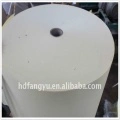
Vendor snapshot (apples-to-apples-ish)
| Vendor | Basis Weight | 0.3 μm Eff. | MOQ | Certs | Lead Time | Notes |
|---|---|---|---|---|---|---|
| Handan Factory (China) | 100–220 g/m² | Up to H13 | ≈500 m² | ISO 9001, RoHS | 10–20 days | Custom PET lamination |
| EU Supplier A | 110–210 g/m² | H10–H13 | ≈1000 m² | ISO 9001 | 4–6 weeks | Strong QC docs |
| US Supplier B | 120–200 g/m² | H10–H12 | ≈800 m² | ISO 9001 | 3–5 weeks | Fast samples |

Customization menu
- Grades: um1–um30; ePM1/ePM2.5 targets or H10–H13.
- Binder: acrylic vs. epoxy; hydrophobic or oleophobic finishes.
- Roll width/ID: 600–1200 mm; cores 3″ or 6″.
- Pleat geometry: support for knife- or rotary-pleat lines.
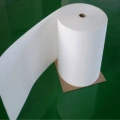
Field notes and mini case studies
Automotive paint shop, EU: swapping to composite fiberglass filter paper in the final stage cut touch-up defects by ~18% and extended filter change from 8 to 12 weeks. Operators liked the consistent pleat stiffness.
Compressor OEM, APAC: with composite fiberglass filter paper in oil-mist separators, carryover dropped from 2.5 mg/m³ to 0.8 mg/m³ (ISO 12500-1 bench), while ΔP stayed under 120 Pa at nominal flow.
Compliance, testing, and docs
Suppliers typically ship full COA: basis weight, thickness, Frazier permeability, efficiency curves (ISO 16890 or EN 1822), and safety sheets. Look for ISO 9001 QMS and optional RoHS/REACH statements. Service life? I’d budget 6–18 months in HVAC, 1,000–3,000 hours in compressor duty—dust load rules, as always.
References:
- ISO 16890-1:2016, Air filters for general ventilation.
- EN 1822-1:2019, High efficiency air filters (EPA, HEPA and ULPA).
- ASHRAE Standard 52.2-2017, Method of Testing General Ventilation Air-Cleaning Devices.
- ISO 12500-1:2018, Filters for compressed air—Part 1: Oil aerosols.
- ISO 9001:2015, Quality management systems—Requirements.
Hebei Fangyu Filter Material Technology Co.,Ltd is the leading innovative developer and manufacturer all kinds of filter materials in China.pocket filter media factory Located in the economically developed Handan Hebei specialized in various kinds of filter materials from Synthetic Media,Paint stop Filter Media Pre- filter Non Woven Fabric ,Wire Mesh Backed Laminated Filter Media,Ceiling filter Auto Cabin Filter Media, polypropylene filter media, Glass Microfiber Filter Media Nonwoven Fabric,Pre- filter non woven fabric, activated carbon filter materials, EN779 bag filter materials, HEPA filter media, air filter HEPA filter media and Filter Accessories.Our filter materials have passed ISO9001:2000 quality certification since 2005.Certified by ISO9001, UL2 and SGS, with emphasis on quality and service. Our strength is the ability to find innovative ways to meet marketplace or product requirements.activated filter media price|super blog